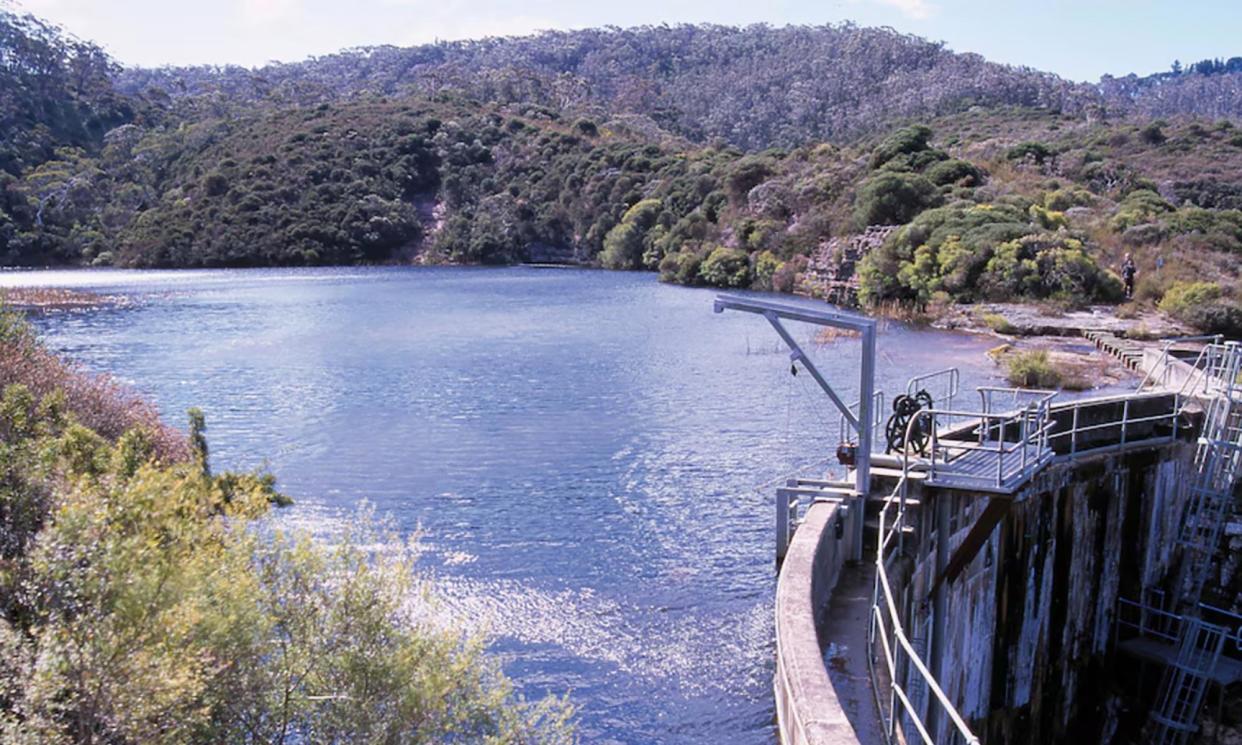Dam in Blue Mountains closed after elevated levels of PFAS chemicals detected

WaterNSW has temporarily closed a dam in the Blue Mountains after tests detected elevated levels of PFAS chemicals in untreated water.
The state’s water agency said it had disconnected Medlow Dam from the region’s water supply as a precautionary measure while further investigations were conducted.
Medlow Dam does not supply raw water directly. The water travels through other dams in the network to the Cascade water filtration plant, which then supplies treated drinking water to Blue Mountains communities.
Sydney Water confirmed the water supplied from the Cascade plant to communities was safe to consume and met the Australian drinking water guidelines.
In a statement, WaterNSW said it had been conducting targeted investigations in the Blue Mountains area in the upper reaches of the greater Sydney catchment to ensure other agencies had up-to-date information on the presence of PFAS.
Related: Body found at NSW beach identified as Queensland woman who vanished six months ago
PFAS (per- and polyfluoroalkyl substances) are sometimes called “forever chemicals” as they are difficult to destroy.
There are about 12,000 PFAS and strong evidence of health harms – including an association with cancer – primarily exists for just two: PFOA and PFOS.
The International Agency for Research on Cancer classifies PFOS as possibly carcinogenic but notes there is “inadequate” evidence that it directly causes cancer.
An expert health panel report on PFAS delivered to the Australian government found “no current evidence that suggests an increase in overall cancer risk” from the chemicals. Research on the chemical compound PFHxS is ongoing and the evidence for any health impacts is less comprehensive than for PFOA and PFOS.
Testing of untreated water at Medlow Dam found levels of PFOS and PFHxS combined were 0.09 micrograms per litre.
This is slightly above the levels set for treated water – o.o7 micrograms per litre – under the Australian drinking water guidelines. Once Medlow Dam water is processed through the Cascade plant, the levels of PFOS and PFHxS in drinking water remained well within the safe limits, WaterNSW said.
“Preliminary results, published on the WaterNSW website, indicate Medlow Dam is the only part of the Blue Mountains dam network returning elevated results,” the agency said in a statement.
“This dam does not supply raw water directly, but as a precautionary measure has been disconnected from supply while further investigations are conducted.”
Once the water leaves Medlow Dam, it travels through Greaves Dam and the upper, middle or lower Cascade dams before reaching the Cascade filtration plant.
Tests found PFAS levels in the untreated water that reached the filtration plant were within the Australian drinking guidelines.
Prof Stuart Khan, a water expert and the head of the civil engineering school at the University of Sydney, speaking generally said if contaminants were detected in water it was appropriate that authorities tried to identify the source and conduct remediation if necessary.
“But at this point … the message Sydney Water has been trying to give is that exposure [to PFAS] is at safe levels and there’s nothing to be alarmed about,” he said.
Khan said he did not believe it was necessary to close Medlow Dam and, at some stage, the water supply in the dam would be needed again.
“It’s sending a message that there’s a problem when the problem is nowhere near as significant as it’s been presented in the media,” he said.
Khan said he was concerned some media reports were “doing a lot of damage in terms of public trust in water supply”. “It’s generating fear where there shouldn’t be and there’s a risk they [regulators] then get priorities wrong.”


